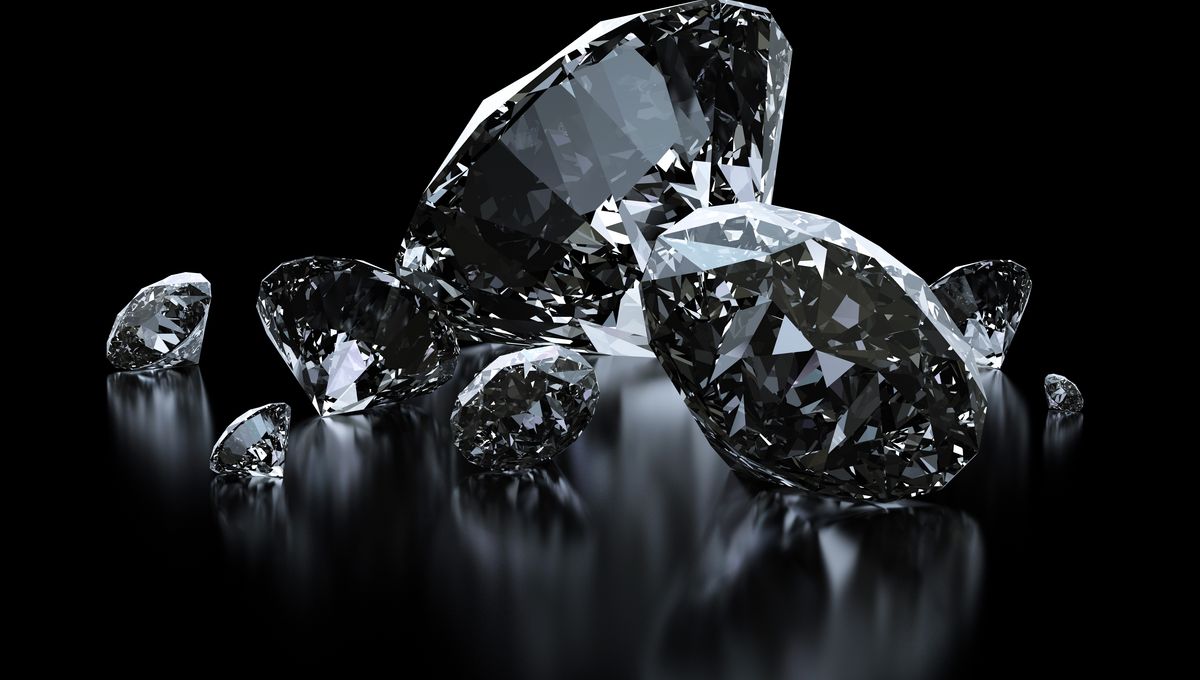
If asked to name the hardest thing in the universe some might suggest that subject they failed in second year or making a Flat Earther acknowledge reality. Specifying that we mean the hardest substance would probably lead to most people saying diamonds, but as with so many questions in this series, the answer isn’t quite as straightforward as your memory banks may tell you.
For centuries, diamonds were the epitome, and indeed the definition of a hard material. Now, it’s arguable they have been surpassed, but the story is not simple.
In 1812 Friedrich Mohs wanted to create a scale of the hardness of substances. Mohs lacked a way of measuring the extent to which substances deform under pressure, so he used talc as his starting point, defining it at one. He set diamonds, the hardest mineral he knew, at 10, leaving everything else to be intermediary between the two. Hardness was assessed based on the capacity of one material to create a visible scratch on the other, such as the famous (but unreliable) testing if a claimed gemstone is real by seeing if it could scratch glass.
Moh’s scale has its problems, including the fact that the values he assigned to intermediary substances were not linear. Nevertheless, it is still in use today for some purposes. Field geologists find it useful in identifying unknown rocks without access to testing equipment.
As a result of the weaknesses in the Mohs’s scale, other measures of hardness have been introduced with more numerical rigor. For example, the Vickers hardness scale measures the load a substance can resist without deforming.
Initially, however, irrespective of the scale used, diamonds remained the hardest substance. Indeed, the Vickers test is conducted by applying great force to a pyramid-shaped diamond pressed against the substance being tested. The four carbon bonds, uninterrupted by the impurities of other gemstones, were tough to beat, and it was widely assumed nothing could be harder.
Even this was recognized to be something of an oversimplification, however, because diamonds come in different types, some harder than others. The hardest diamonds, categorized as Type IIa, have almost no impurities. Although IIa diamonds make up only 1-2 percent of natural diamonds, they include many of the most famous stones in the world. Most synthetic diamonds, designed to be as hard as possible, are Type IIa.
Humanity is seldom so easily satisfied, and simulations of wurtzite boron nitride (wBN) crystals, produced in tiny grains in volcanoes, suggested it was possible to exceed diamonds’ hardness. Simulations don’t always match reality, and natural wBN pieces are so small they can’t be tested directly.
Debate continued over whether this combination of atoms either side of carbon on the periodic table really could outdo the original. When chemists were able to produce bulk quantities of wBN in 2009 they found it less hard than diamonds on the Vickers scale, but not everyone agrees.
Another natural substance that has been claimed to be harder than diamonds is lonsdaleite, but this is also up for debate. Like diamonds, lonsdaleite is made of carbon, but arranged in a hexagonal, rather than cubic, pattern. There is a reason bees build their honeycomb from hexagons – it’s a very strong shape – and in theory, lonsdaleite should be 58 percent harder than diamonds.
However, lonsdaleite only forms naturally when asteroids slam into the Earth. The carbon in asteroids that gets compressed into lonsdaleite is never perfectly pure, and the traces of other elements weaken the product. Consequently, while in theory there may be some natural lonsdaleite out there that is harder than diamond, no one has found it.
Time to turn to the lab, which in 2004 led to the production of graphene. (Graphene was actually produced earlier, but scientists didn’t recognize what they had). Graphene resembles lonsdaleite in being made of carbon with a hexagonal structure, but being artificial it can avoid the purity problems. However, it exists as sheets of a single layer of atoms.
Graphene is such a wonder material – its inventors won the 2010 Nobel Prize for Physics for its discovery – that its hardness barely gets mentioned among its other properties. Nevertheless, it is in theory harder than diamonds. On the other hand, there’s a reasonable question of what hardness means for what is effectively a two-dimensional material.
Claims have also been made for several other synthetic materials such as Dyneema and Buckypaper, formed from sheets of carbon nanotubes. Unfortunately, these all currently exist in such tiny quantities that it’s not practical to simply apply the Vickers test to them and declare one the hardest.
Super-hard materials are sought for practical reasons, not just to show off. Diamonds have many industrial applications that require cutting or polishing hard substances. A harder material produced in bulk quantities could have immense value if it could achieve the same thing more quickly. So far, however, nothing has met this requirement, so diamonds remain a machinist’s best friend.
Source Link: What Is The Hardest Substance In The Universe?